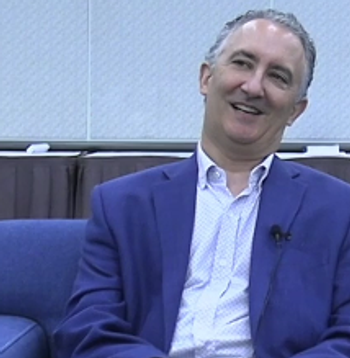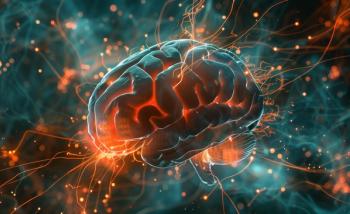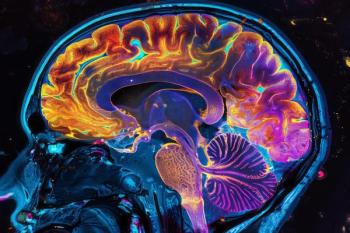
- Vol 30 No 7
- Volume 30
- Issue 7
Requiem for DSM
This psychiatrist's wish is that in one more generation, our profession will learn to go beyond DSM to the truths of science.
[[{"type":"media","view_mode":"media_crop","fid":"15680","attributes":{"alt":"","class":"media-image media-image-right","id":"media_crop_5094651023296","media_crop_h":"0","media_crop_image_style":"-1","media_crop_instance":"778","media_crop_rotate":"0","media_crop_scale_h":"213","media_crop_scale_w":"160","media_crop_w":"0","media_crop_x":"0","media_crop_y":"0","style":"float: right;","title":" ","typeof":"foaf:Image"}}]]Almost 2 decades ago, when I graduated from psychiatric residency, DSM-IV was published. You will receive this letter along with, I’m sure, the spanking new shiny edition of DSM-5. I have one wish for you. When 20 years and another generation pass, I hope this will be the last of the DSMs. My wish is that in one more generation, our profession will learn to go beyond DSM to the truths of science.
When I graduated a generation ago, I accepted DSM-IV as if it were the truth. I trusted that my elders would put the truth first, and then compromise for practical purposes where they had no truths to follow. It took me 2 decades to realize a painful truth, spoken now frankly by those who gave us DSM-III when Ronald Reagan was elected and DSM-IV when Bill Clinton was president: the leaders of those DSMs don’t believe there are scientific truths in psychiatric diagnosis-only
It might not have been so bad if, as the framers of DSM-III wished, reliability had been a way station to validity. First, let’s agree on what we call things, then we can study them better and change the definitions to get gradually closer to the truth.
That’s what leaders such as
This was the high-water mark of science in American psychiatry.
But immediately the project went awry. Spitzer used the Research Diagnostic Criteria as the basis for DSM-III. He convened his task force work groups, and a dozen diagnoses became a hundred. He then took the results of the task force to the
I suggest you read new historical books that carefully study the
Take major depressive disorder-a meaningless term. Have you ever wondered why it is “major”? The historian Edward Shorter describes how the initial goal had been to include severe depression as a
These severe episodic depressions were seen before DSM-III as part of manic-depressive illness, in contrast to neurotic depression, which was seen either as a personality state or as a reaction to the stresses of life only.6,7 On the basis of genetic and course studies, the Washington University researchers agreed with Kraepelin’s German critic, Karl Leonhard, that the severe recurrent depressive episodes are different from recurrent mania alternating with depression, so they took the view that the first condition should be called “unipolar” depression and the second “bipolar” disorder.8
The term “bipolar disorder” was formalized in DSM-III in 1980 and remains little changed. You will note the term “unipolar” is nowhere to be found in DSM. The DSM-III leadership realized that the APA could not accept the removal of the concept of “neurotic depression,” which was the main insurance coding used to pay psychoanalysts, with nothing to replace it. So they proposed the term “minor” depression instead, and unipolar depression was defined, in contrast, as “major” depression-minor and major: the original proposal.
Eventually the word “minor” got dropped because of concerns among APA psychoanalysts that it would be accompanied by minor insurance reimbursement.4 The terms “
We have lived with this largely unscientific definition of “major depressive disorder” for almost two generations, and nobody dares change it. It is the same in DSM-5 with
Did you ever wonder why two generations of studies in
Yet strident critics of DSM, often psychologists, are wrong: they want to claim that there is no part of psychiatry, not a single shred, that is medically legitimate: there are no diseases in psychiatry. But there are psychiatric diseases (eg, schizophrenia, manic depression), just not almost 200 of them.
Can anyone accept this notion? That DSM is not 100% false (it is 91.9% false, based on the original 2 dozen RDC criteria divided by 297 DSM-IV diagnoses), and not 100% true either. That there are diseases (in psychiatry as well as in medicine), but most clinical pictures (in medicine as well as in psychiatry) are not diseases.
The whole DSM system leads to this confusion and debate. The system has become ossified, like a Politburo that refuses to change. Reform is no longer an option: DSM-5 could have been that change, but it couldn’t enact even the addition of dimensions to personality traits, one of the most strongly proven scientific facts in psychology. When the APA Board of Trustees rejected personality traits as part of DSM-5, we lost the chance for a Gorbachev to reform the system. Now we can only wait for a wholesale change, a Yeltsin standing on a tank. Or, barring that, we will succumb to professional hibernation for generations more.
Our DSM leaders did not lie; they deceived themselves, which is worse, because then they could honestly mislead the rest of us. Our strident antipsychiatry critics do not lie; they mistake half the truth for the whole, which is worse, because irrationally held truths are more harmful than reasoned errors.9
Good intentions abound all around, so respect everyone with whom you disagree; but don’t forget to keep disagreeing. Good intentions aren’t enough.
If we are ever to get to validity, we need to have the courage to start anew. Let
I trust clinicians; DSM leaders don’t. I don’t trust DSM leaders; I trust you.
Let there be no DSM-6.
References:
1. Frances A. DSM in philosophyland: curioser and curioser; 2010.
2. Klerman GL, Vaillant GE, Spitzer RL, Michels R.
3. Spitzer RL, Endicott J, Robins E. Research diagnostic criteria: rationale and reliability. Arch Gen Psychiatry. 1978;35:773.
4. Shorter E. Before Prozac: The Troubled History of Mood Disorders in Psychiatry. New York: Oxford University Press; 2009.
5. Decker HS.
6. Goodwin F, Jamison K. Manic Depressive Illness. 2nd ed. New York: Oxford University Press; 2007.
7. Roth M, Kerr T. The concept of neurotic depression: a plea for reinstatement. In: Pichot P, Rein W, eds. The Clinical Approach in Psychiatry. Paris: Synthelabo; 1994.
8. Leonhard K. The Classification of Endogenous Psychoses. New York: Irvington; 1957.
9. Huxley TH. Aphorisms and Reflections. London: Macmillan and Co; 1907.
Articles in this issue
over 12 years ago
Discontinuing Medications: When, Why, and How-toover 12 years ago
Characteristics of Sleep Disorders in Womenover 12 years ago
Olanzapine/Fluoxetine Combination Affirmed for Bipolar Depressionover 12 years ago
Crime and Therapy: Good News About Pharmacotherapy for ADHDover 12 years ago
Late Last Nightover 12 years ago
The Dope on Medical Cannabis: Results of a Survey of Psychiatristsover 12 years ago
Obesity in Patients With Psychiatric ConditionsNewsletter
Receive trusted psychiatric news, expert analysis, and clinical insights — subscribe today to support your practice and your patients.














